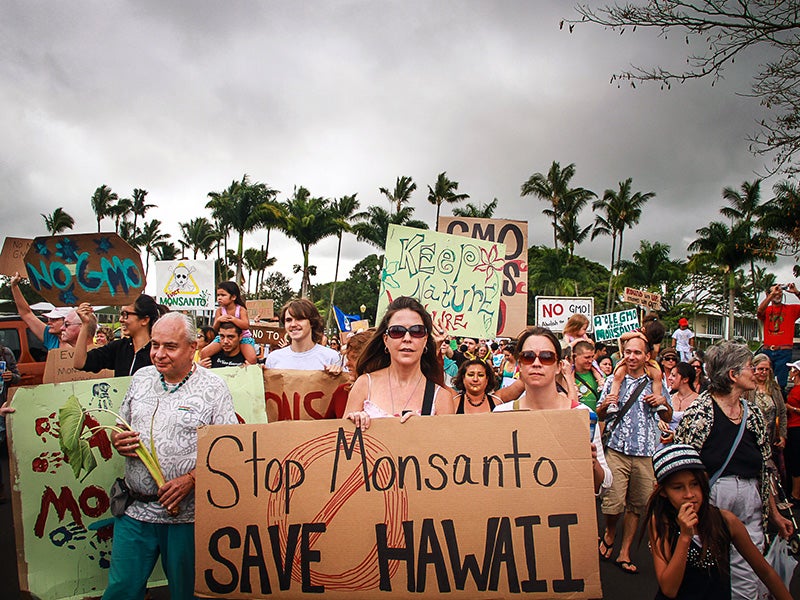Challenging EPA, Monsanto Over the Crop-Damaging Pesticide “XtendiMax”
Dicamba is linked to increased rates of cancer in farmers and birth defects. The increase in dicamba spraying will trigger an outbreak of dicamba resistance in weeds, just as massive use of Roundup on first generation GE crops created an epidemic of weeds immune to glyphosate.
Regional Office / Program
Case Overview
Farmers and conservation groups have filed a federal lawsuit challenging the U.S. Environmental Protection Agency’s approval of Monsanto’s new “XtendiMax” pesticide.
The approval, of the pesticide company’s latest version of the older weed-killer known as dicamba, permits it to be sprayed directly on Monsanto’s genetically engineered (GE), dicamba-resistant soybeans and cotton. The decision greenlights a more than 10-fold increase in use of the toxic pesticide, increasing risks to farmers, community health, and the environment. Because these same crops are also engineered to withstand applications of Monsanto’s Roundup, the overuse of that pesticide (containing the active ingredient glyphosate) will continue at current high levels.
The 2017 crop season — the first year of XtendiMax use — was an unprecedented disaster. Just as critics warned would happen, dicamba sprayed on Monsanto’s GE soybeans and cotton formed vapor clouds that drifted to damage a host of crops and wild plants. Over three million acres of soybeans as well as scores of vegetable and fruit crops, trees and shrubs throughout the country were damaged by dicamba drift. Flowering plants near cropland also suffered, with potential harms to pollinators, as well as hundreds of endangered animal and plant species. Agronomists reported they had never seen herbicide-related drift damage on anything approaching this scale before.
Dicamba is linked to increased rates of cancer in farmers and birth defects, while glyphosate was recently classified as a “probable carcinogen” by the World Health Organization. Farmers are extremely alarmed by dicamba’s propensity to drift and damage neighboring crops, while conservationists are concerned about its impacts to biodiversity. Dicamba drift threatens plants that provide nectar for pollinators and habitat for animals, and it is frequently detected in surface waters.
Farmers in 10 states have already reported that much more limited dicamba spraying associated with Monsanto’s new dicamba-resistant crops has caused widespread damage to thousands of acres of their crops. And last fall, a dicamba drift dispute between an Arkansas and a Missouri farmer even resulted in one farmer being shot to death.
The huge increase in dicamba spraying will trigger an outbreak of dicamba resistance in weeds, just as massive use of Roundup on first generation GE crops created an epidemic of weeds immune to glyphosate. While Monsanto spins its new dicamba crops as a fix to the current weed resistance problems its own Roundup Ready crop system caused, many scientists, and even the U.S. Department of Agriculture, predict the opposite: the rapid emergence of more superweeds, resistant to both herbicides. The evidence on the ground already indicates EPA’s weak weed resistance “management” plan will make the problem even worse, both because it lacks limits on dicamba use, and because it primarily relies on Monsanto for its implementation and enforcement.
Despite admitting significant risks to dozens of endangered species, the EPA still refused to consult with the expert federal agency in charge of endangered species, the U.S. Fish and Wildlife Service.

Case Updates
Case page created on January 23, 2017.

